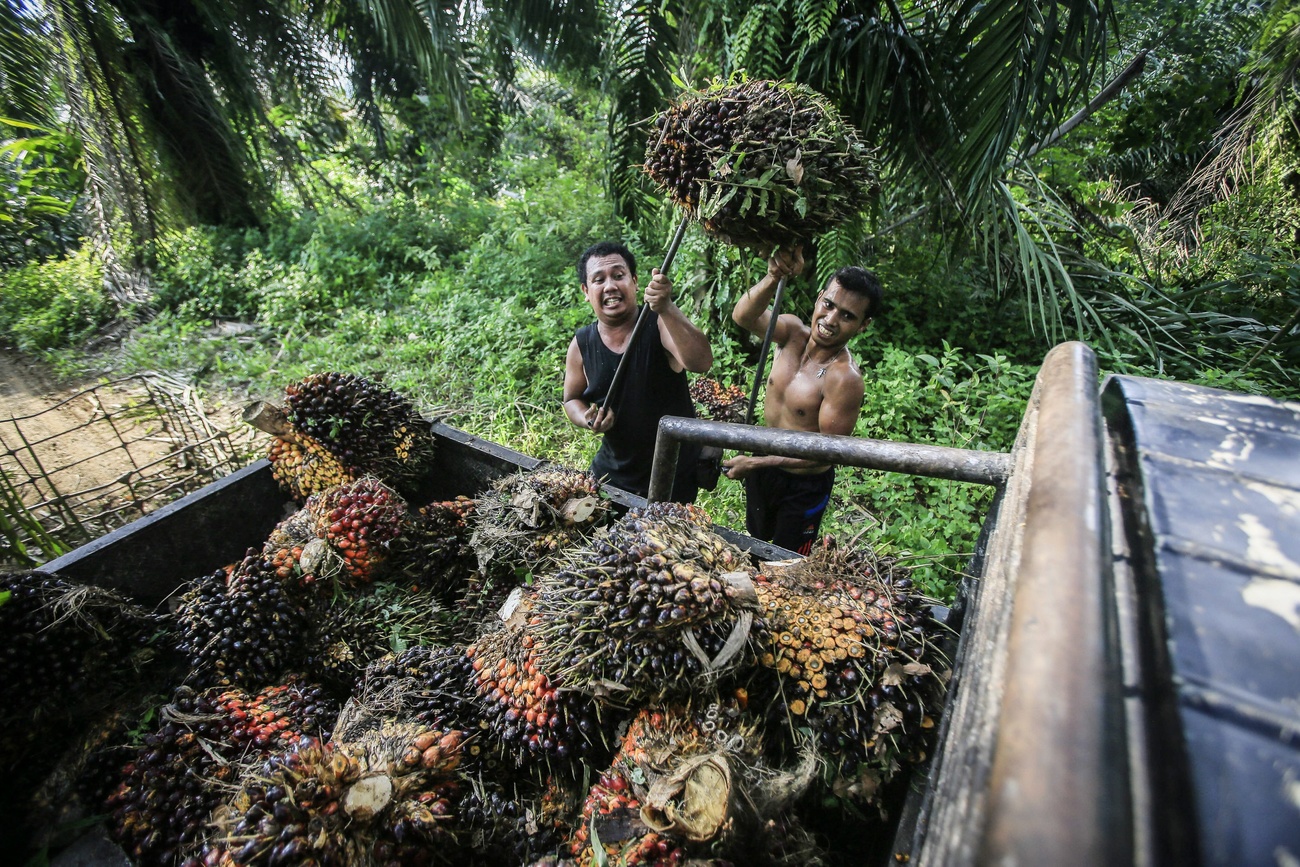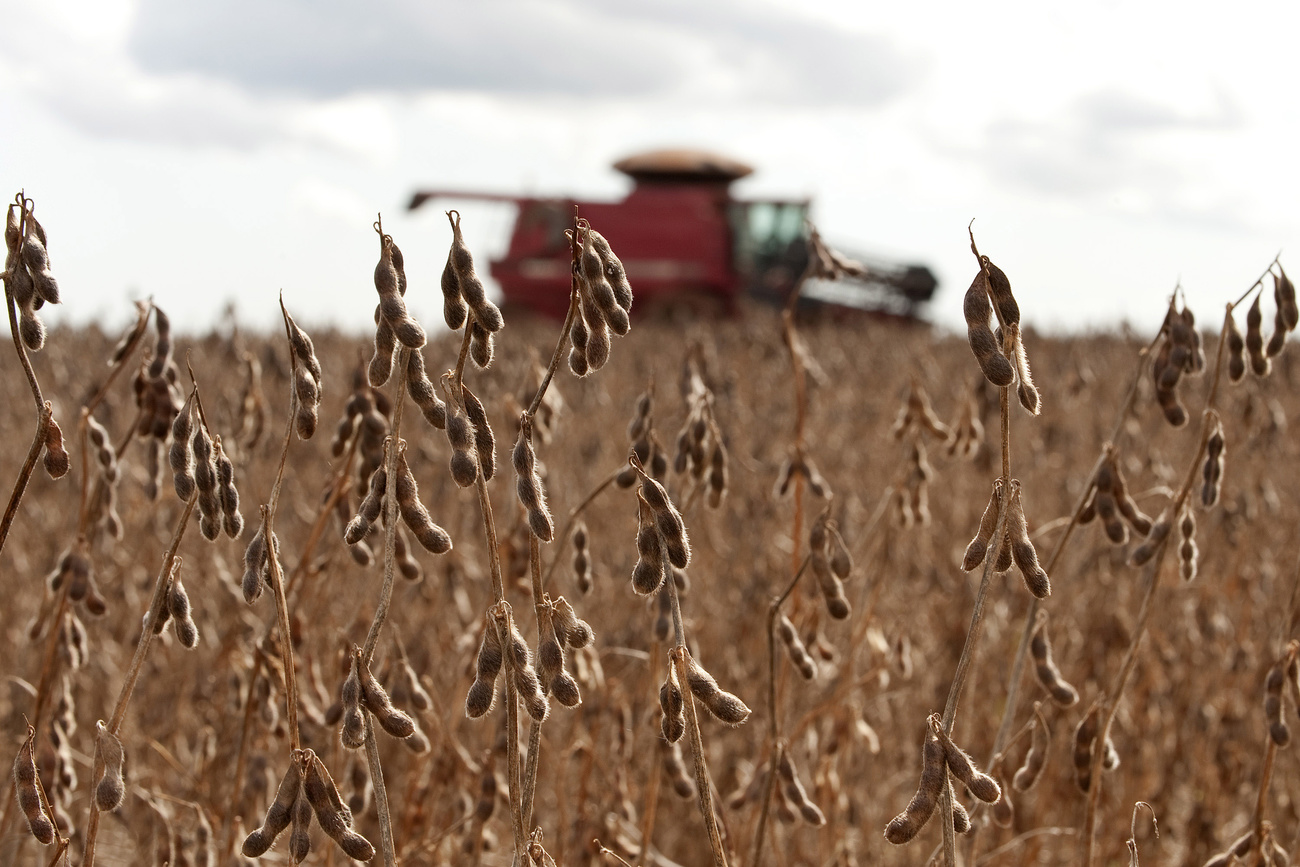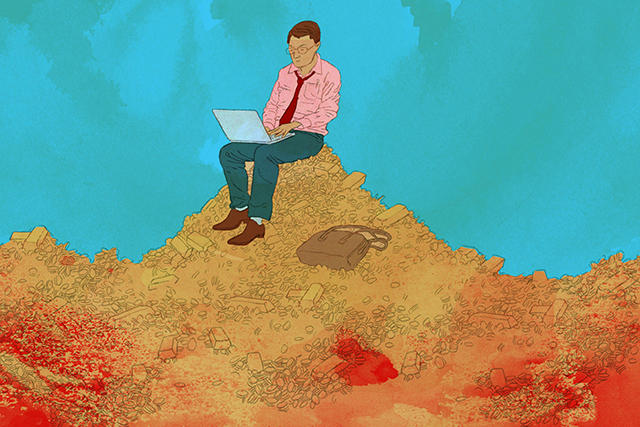Blockchain for sustainable supply chains: hype or saviour?

If you want to know where the ingredients in your favourite snack came from, you can get the whole story by scanning a code on the back of the packet with your phone. That’s the idea behind a new blockchain-based supply chain tracking system being used by multinational companies like Swiss-based Nestlé. But it’s far from a silver bullet.
It is a hot day in rural Mexico. A truck stops next to a palm oil plantation to pick up a bunch of palm fruits that have been recently harvested. The vehicle will transport the fruits to a mill 20km away that will process them into palm oil. The oil will end up in food products sold by Swiss multinational Nestlé. But there is more to this simple operation than meets the eye.
Each bunch of palm fruits has an RFID chip embedded in it. When the bunch is loaded on to the truck, a sensor on board registers it and tracks its journey from the plantation to the mill using sophisticated satellite technology. All the data generated and collected at each stage is sent to Nestlé headquarters via a blockchain-based supply chain management system called OpenSC.
“This technology ensures that the truck has not stopped en route to pick up fruits from another farm. It guarantees that fruits that reach the mill are really from the farm indicated,” says Benjamin Dubois, who is in charge of the blockchain rollout at Nestlé.
Bet on tech
Over the past decade, Nestlé has been trying to ensure that it doesn’t use palm oil linked to deforestation after being criticised by activist groups like Greenpeace. The Swiss-based multinational began sourcing certified, “clean” oil from the Round Table on Sustainable Palm Oil (RSPO) and also started monitoring its suppliers via satellite. Despite these attempts, Nestlé will not meet its target of having a zero-deforestation supply chain by 2020. So far, a little over 70% of its palm oil is certified as deforestation-free, with 62% able to be traced back to the plantation and 93% to the mill.
The palm oil blockchain experiment in Mexico is Nestlé’s latest attempt to gain oversight over its supply chain. The company’s flirtation with the technology behind Bitcoin began in 2017 when it jumped on board IBM’s Food Trust blockchain ecosystem, a readymade solution popular with companies. In 2019, the company was able to offer consumers blockchain-recorded data for its Mousline mashed potato mix and Guigoz infant formula in France, followed a year later by Zoégas coffee in Sweden. With the aid of a smartphone, consumers can access data like information on farmers, harvest times, storage in warehouses or shipping routes.
The Swiss firm is now expanding the technology to more challenging raw materials like palm oil and more open blockchain options like OpenSC, a platform jointly developed with WWF Australia. OpenSC relies on automation using IoT (internet of things) technology such as RFID tags, QR codes and sensors for monitoring the temperature of a product, for example.
This will allow anyone to access blockchain-based supply chain information for a product. Nestlé is currently testing OpenSC for palm oil in the Americas and milk produced in New Zealand.
“It is not yet as advanced as IBM Food Trust. It is also a lot more complex and requires creating new data sources,” says Dubois.
How secure?
Christoph Schmidt, a specialist in logistics management at the federal technology institute ETH Zurich, is in favour of more open blockchain systems like OpenSC even though they require a lot more work for companies to implement. But he questions their security.
“I think OpenSC is a step in the right direction as it is a consortium and not driven by a small number of companies. However, it still poses a risk to firms in terms of data security,” he says.
“The biggest issue with blockchain in supply chains is we have this interface with the real physical world. There are various data entry points along a supply chain that are weak points.”
The quality of the information provided by a system like OpenSC hinges on the accuracy of the data entered. Schmidt explains that this is problematic in complex supply chains as more data entry points increase the risk of errors, especially when poorly trained farmers or workers under time pressure are involved. It is possible to automate some aspects of data entry by using sensors or RFID chips, but every interface still creates opportunities for errors or even manipulation.
Schmidt estimates that the risk of such manipulation increases in “countries where people are poor and desperate to make money”.
One solution, he says, is getting third-party certifiers like Fair Trade or Rainforest Alliance to verify if the information entered into the blockchain can be trusted.
Power imbalance
Use of the blockchain system also risks the exclusion of suppliers that do not jump on board. Those that do may become beholden to a single company.
“Smaller suppliers are often pressured to adopt IT systems they would not normally use to make communications with big buyers easy,” Schmidt says. “Those who work for many big companies will have to become part of different blockchain systems which can make it complicated for them.”
Even when suppliers do jump on board, companies hold the power over which data on the blockchain is shared with them. This is particularly true for closed blockchain ecosystems like IBM’s Food Trust that gives companies more control of who can see what.
“Users can set permissions that govern what data can be seen and by whom – determined solely by the owner of the data. Data uploaded by a third party is owned by the original owner,” states IBM Food Trust in its FAQs concerning data ownership. In this example, the “original owner” would be the company, such as Nestlé, that pays for the service.
Schmidt believes this goes against the original idea behind blockchain, meant to provide full transparency and sharing of data and information among all participants.
“Then you are moving towards other database configurations. You are using blockchain in a way that it was not meant to be used,” the researcher argues.
More level playing field?
Zurich-based digital strategist Kamales Lardi, whose company BloomBloc has worked on blockchain-based traceability solutions for the Malaysian palm oil industry, has another idea. She thinks that regulators, instead of companies, should take on the task of developing and implementing blockchain for specific sectors.
“There has to be democratised solution and not one in the hands of a few companies,” she says.
Lardi partnered with the Malaysian Palm Oil Council (MPOC) to develop a pilot project that enables palm oil growers of all sizes to easily adopt the blockchain solution. According to her, between 30% to 40% of palm oil growers in Malaysia are smallholders and most do not even have smartphones. They risk being excluded from blockchain solutions developed by companies while big palm oil growers reap the benefits thanks to better infrastructure and resources.
“Some palm oil plantations have drones to monitor the harvest while others don’t even have a 2G phone connection. That is why we focused on working with regulators,” says Lardi.
Schmidt sees potential in her approach for a more inclusive implementation of blockchain.
“I think it is a step in the right direction for industry regulators. It will also solve the problem of getting more companies and suppliers on board if it is not run by a competitor,” he says.
Everyone, including Nestlé, agrees that blockchain alone cannot guarantee sustainable supply chains. A combination of different technologies, certification agencies and a willingness to be transparent about sourcing are all needed. And when it comes to making sure a product is not contributing to deforestation or other illegal activities, the fundamentals are still important.
“Blockchain helps with trusting the data provided by the suppliers but not with trust in the supplier,” says Schmidt. “For that, you still need to build good relationships with them.”

In compliance with the JTI standards
More: SWI swissinfo.ch certified by the Journalism Trust Initiative




Join the conversation!